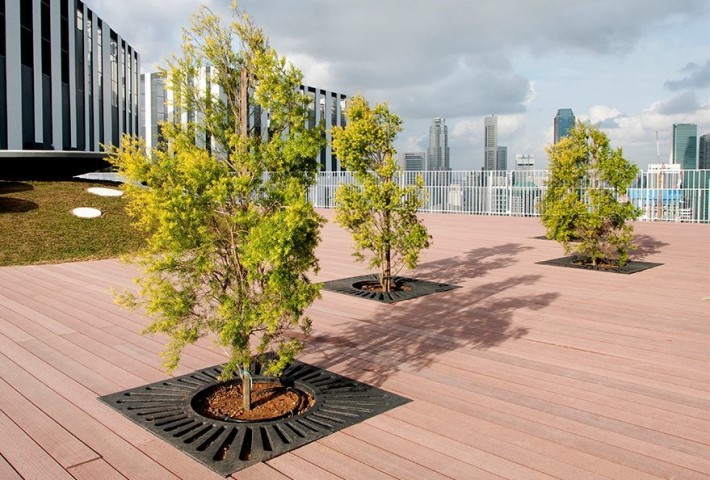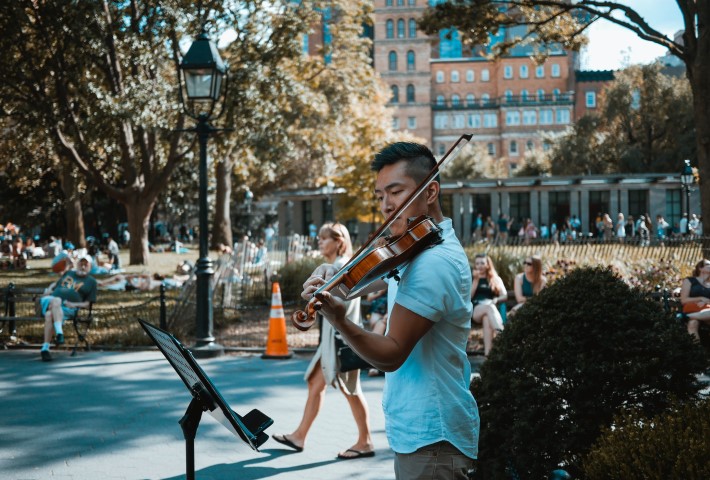Landscape architecture is one of many design tactics that can turn a drab urban environment into an extraordinary place. Landscape architecture brings life to a concrete jungle, contributing to the visual appeal and usability of the area. When paired with sustainability and properly planned-out approaches, landscape architecture provides even more benefits. By doing all of this, urban landscape architecture can dramatically improve any city.
Sustainability in Urban Landscape Architecture
Sustainable design aims to minimize negative impacts on the environment to protect future generations. At the same time, it aims to provide benefits to current users. As a result, sustainability has become entrenched in landscape architecture for multiple decades now. Sustainable architecture can help reduce maintenance and energy costs. It also leads to a healthier local environment, including soil and waterways. This allows the natural area to have more resilience to climate impacts. Plus, sustainability provides a better blending of the urban and natural environments.

Sustainable design and materials, including reinforced stone grates, can help bring the natural and urban environments together.
In order to incorporate sustainability, landscape architects can use low-impact building materials, including those made from recycled content and energy-efficient materials. Choosing locally sourced materials and ones designed to last a long time can help reduce the carbon footprint of the building process. Sustainable landscape design also often incorporates native plants and features that increase energy efficiency, such as windbreaks.
Greenery and Tree Grates in the City
Incorporating trees and other greenery in the urban environment provides a range of benefits to the surrounding community. The most apparent benefit is beauty. People enjoy having a sense of life around them and having a city with greenery can help with this.
However, trees also benefit businesses as well. They increase the value of surrounding properties, serve as a barrier between roads and stores, and provide much-needed shade on hot days, allowing consumers to leave the house and participate more in the local economy. This makes them both beautiful and practical.

Tree grates can protect tree roots, enhance drainage, and increase the use of outdoor spaces.
Adding trees to any environment centered around hardscape should involve installing tree grates. Tree grates help protect tree roots and keep the tree healthy. They reduce soil compaction, keeping the soil loose enough to drain excess water, and prevent pedestrian traffic from harming the base of the tree. Tree grates can also add a splash of design into a hardscape, as grates come in a variety of colours and styles.
Choosing a sustainable material like reinforced stone provides additional benefits. This grate material can help keep the ambient air temperature low. This can prevent damage to the tree and make the space a more comfortable temperature for local people. Because they are customizable, designers can choose colours and designs that are perfect for their specific area.
Water Management Through Trench Grates
Well-planned urban landscape architecture also takes water management into account. Pavement and other types of hardscape are non-permeable and, thus, need a drainage system. Incorporating a drainage system within urban landscape design can have a huge impact on the success of a system.
Trench drains are a commonly used tactic to control excess water. They can be used in many different areas, from private driveways to school grounds to sidewalks. Trench drain grates can be customized to fit the needs of the application. Whether pedestrian or vehicle traffic is needed or how heavy the water flow can get can all be accounted for. Plus, they can be incorporated into a larger drainage system that includes tree grates, sump covers, and other drainage grates.
Like tree grates, these practical yet decorative grates can also add aesthetic value. They come in designs and colours that can contribute to the overall appeal of a larger landscape.
Increasing Community Use
Incorporating sustainable design into urban landscape architecture can increase the local community's use of the place. Local residents and workers are more likely to enjoy the outdoors if the area is beautiful, comfortable, and easy to access. Sustainable landscape design can make this happen.

©Josh Appel | http://www.unsplash.com/
Sustainable urban landscapes can make outdoor spaces more enjoyable for the local community.
A well-designed drainage system that keeps excess water at bay can increase the time people in the community can use certain areas. If water quickly drains away from hardscaped areas in the local park, they are more likely to be able to use the space following a rain event. Drain grates such as trench drains and sump covers can make this a lot easier to incorporate into the surrounding landscape.
Customized grates, such as trench and tree grates, can increase the pedestrian areas available on a day-to-day basis. Tree grates allow less of the sidewalk to be disrupted by tree pits while still allowing street trees to flourish. Trench grates ensure pedestrians and vehicles are still able to travel within a given area easily.
Final Thoughts
Properly utilizing landscape architecture within an urban environment can provide many positives to the area. It can improve sustainability, add greenery, simplify water management, and generally increase the utility of public spaces. These are specific improvements that can be appreciated by anyone who lives, works, or even just visits the city.










